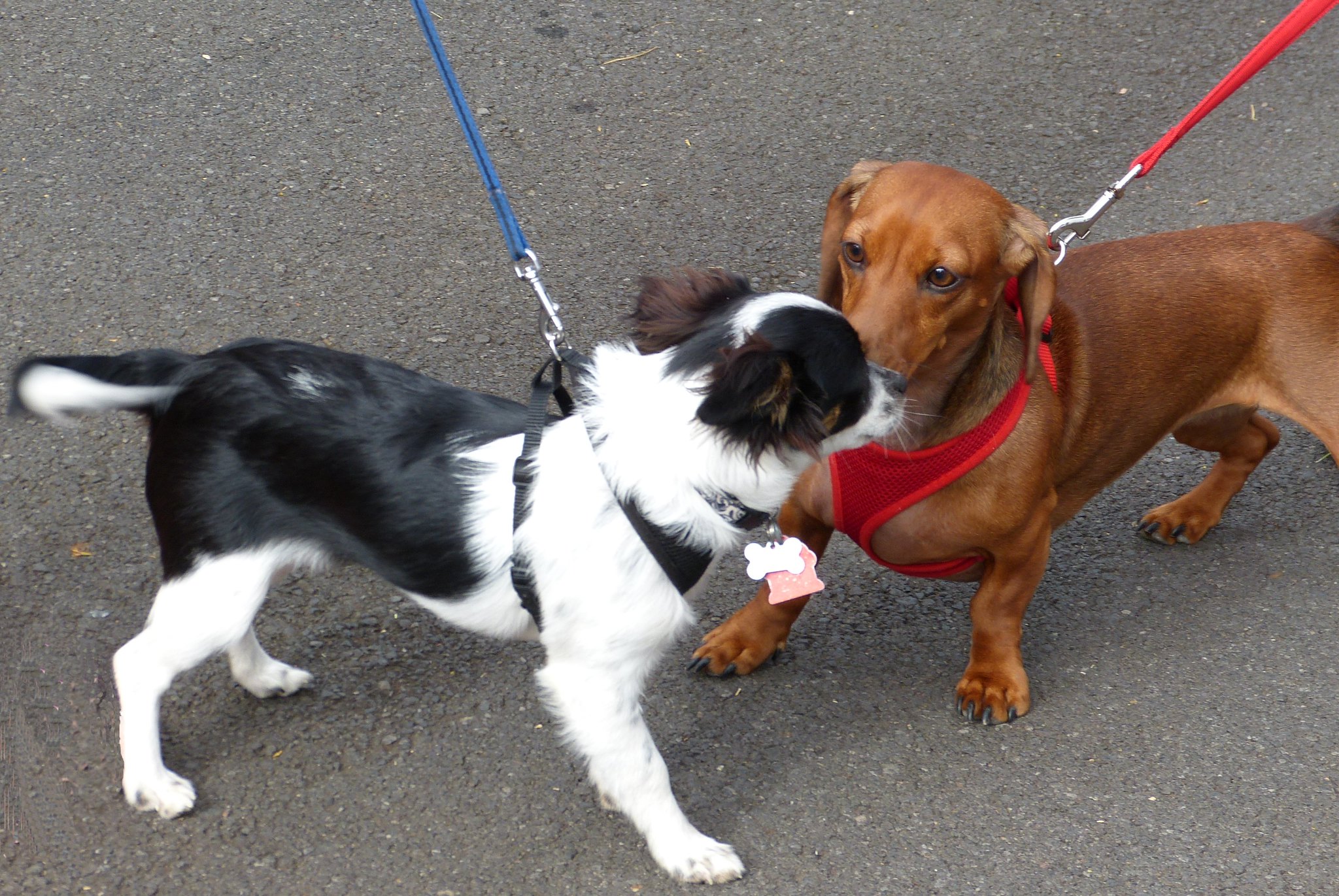
15 Oct7 things to consider before letting two dogs greet on leash
The city streets are not an ideal place for dogs to socialize. In our latest podcast episode, and below, we outline some things to keep in mind when you and your dog spot another dog on the street, whether or not you're going to let your dog say “hello” to any other dog:
-Sidewalks can be narrow, not allowing much space for a dog to get out of the way if he wants to avoid dogs who are approaching — a lot of dogs simply don't like being around other dogs! Many older dogs are especially wary of puppies, who may have a tendency to try to greet in overly exuberant, impolite ways. If a dog is leashed and can't get away from a dog who is trying to greet him, he may create space by lunging, growling, or even biting. That is why it's never a bad idea to just let all dogs have their space on the street.
-Teach your dog that every dog you see is a cue that he should pay attention to you. You can do this by simply presenting a treat as soon as you see another dog — it's always smart to treat near your knee or ankle, to encourage your dog to hang out in that area in general. If you don't have a treat, you can do something else to get your dog's attention and reward him: change direction, start running with your dog, or just talk to him in a voice he likes.
-Make sure your dog gets lots of good off-leash playtime with other dogs –especially if your dog is a puppy. One-on-one dog play with a familiar dog is usually the best kind of play, which means a playdate with a neighbor's dog in the hallway can get the job done. The more good interactions your dog gets with a familiar playmate, the less your dog is going to try to turn every street encounter into a social opportunity.
-If you are going to choose to let your dog say “hello” to another dog on the street, you can try to keep things safe by using your words and your eyes. Make sure to ask the dog owner if it's okay for your dog to greet the other dog. If the other person says “yes,” then observe the other dog for appropriate body language. Signs that the other dog is uncomfortable include stiffness of any kind, seeing the white of the dog's eyes on the sides (what we call “half moon eye” or “whale eye), and a tucked tail. Signs the other dog is ready to say “hello” are general wiggliness and a loose, wagging tail.
-Lead your dog in from the side. A head on greeting is awkward for dogs. A natural, nice greeting should include a mutual butt or genital sniff and then a mutual muzzle sniff.
-Keep the greeting short! Three seconds should be enough time for each of them to sniff each other on each end. Most dogs will do a series of things before becoming aggressive in any way, and three seconds is usually too short of a period for anything to progress to any kind of point-of-no-return. You can put a cherry on the top of a nice greeting by giving your dog a treat in the opposite direction from the other dog when three seconds is up, or run in a fun way in the other direction.
-Keep your dog’s leash as loose as possible when around other dogs. Leashes often become uncomfortably taut during greetings and a dog can learn to think that even just the sight of another dog predicts yanking and choking. This association may ultimately lead to on-leash aggression. Any kind of tension on the leash may forge the wrong association.



